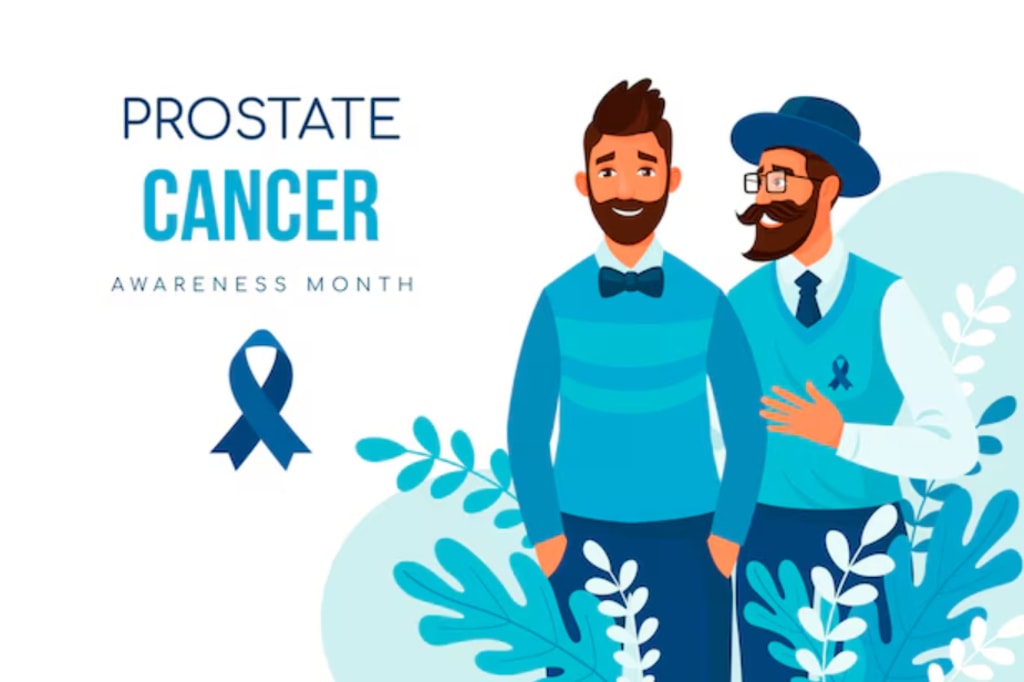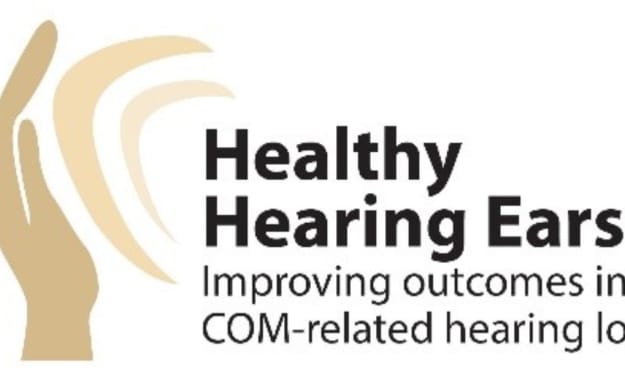How Do You Know If Your Prostate Is Healthy?
What are the first signs of a prostate problem?

### How Do You Know If Your Prostate Is Healthy?
The prostate, a small walnut-sized gland located below the bladder and in front of the rectum, plays a crucial role in male reproductive health. It's responsible for producing seminal fluid, which nourishes and transports sperm during ejaculation. As men age, monitoring the health of this gland becomes increasingly important to prevent conditions such as prostatitis, benign prostatic hyperplasia (BPH), and prostate cancer. But how can you tell if your prostate is healthy? Let’s explore the signs of a healthy prostate and what to watch out for.
#### Key Signs of a Healthy Prostate
1. **Normal Urination Patterns**
- A healthy prostate allows for normal urinary function. You should be able to urinate without difficulty, and your urine stream should be strong and consistent. If you’re not waking up multiple times at night to urinate and you don’t feel the need to strain, it’s a good sign your prostate is functioning well.
2. **Absence of Pain or Discomfort**
- A healthy prostate typically doesn’t cause pain. If you’re not experiencing pain or discomfort in the lower abdomen, pelvic area, or during urination, your prostate is likely in good shape. Pain in these areas could indicate an issue such as inflammation or infection.
3. **Regular Sexual Function**
- The prostate is involved in sexual function, contributing to the production of seminal fluid. If you’re experiencing normal erections and ejaculation without pain, your prostate is likely healthy. Difficulty with sexual performance or painful ejaculation can be signs of a prostate issue.
4. **No Blood in Urine or Semen**
- Seeing blood in your urine or semen can be alarming and is not a normal sign. While it can sometimes be due to a minor issue, it’s often a signal that something may be wrong with your prostate or urinary system.
5. **Normal Prostate-Specific Antigen (PSA) Levels**
- PSA is a protein produced by both normal and cancerous prostate cells. Regular screenings of PSA levels in the blood are recommended, especially for men over 50. Normal PSA levels vary depending on age, but generally, a lower PSA level indicates a healthier prostate.
#### Regular Check-ups and Screenings
Even if you feel perfectly fine, regular check-ups and screenings are crucial, especially as you age. Here’s what to expect:
1. **Digital Rectal Exam (DRE)**
- During a DRE, a healthcare provider inserts a gloved, lubricated finger into the rectum to feel the prostate for abnormalities. While it may be uncomfortable, it’s a quick procedure that provides valuable information about your prostate health.
2. **PSA Blood Test**
- A PSA test measures the level of prostate-specific antigen in your blood. Elevated levels can be a sign of an enlarged prostate, infection, or prostate cancer. Your doctor will consider your age, race, and family history to interpret your PSA levels.
3. **Urine Flow Test**
- This test measures the strength and amount of your urine flow. A reduced flow can be a sign of an enlarged prostate blocking the urethra.
4. **Prostate Ultrasound and Biopsy**
- If there are concerns from your DRE or PSA test, your doctor might recommend an ultrasound or a biopsy. An ultrasound provides images of the prostate, while a biopsy involves taking small tissue samples for examination.
#### Maintaining Prostate Health
Maintaining a healthy lifestyle can significantly contribute to prostate health. Here are some tips:
1. **Eat a Balanced Diet**
- Diets rich in fruits, vegetables, and healthy fats can promote prostate health. Foods high in antioxidants, such as tomatoes (rich in lycopene), are particularly beneficial.
2. **Stay Active**
- Regular exercise can help maintain a healthy weight and reduce the risk of prostate problems. Aim for at least 30 minutes of moderate exercise most days of the week.
3. **Limit Alcohol and Caffeine**
- Both alcohol and caffeine can irritate the bladder and may increase the need to urinate. Limiting these can help maintain better urinary function.
4. **Avoid Smoking**
- Smoking has been linked to increased risks of prostate cancer and other health issues. Quitting smoking can improve your overall health and reduce prostate problems.
5. **Manage Stress**
- Chronic stress can affect your hormonal balance and potentially contribute to prostate issues. Practices such as meditation, yoga, or deep breathing exercises can help manage stress.
#### When to See a Doctor
It’s important to see a healthcare professional if you notice any of the following symptoms:
- Difficulty starting or stopping urination.
- Weak or interrupted urine stream.
- Frequent urination, especially at night.
- Pain or burning during urination.
- Pain in the lower back, hips, or pelvis.
- Blood in urine or semen.
- Painful ejaculation or difficulty achieving an erection.
Early detection and treatment of prostate issues are crucial for effective management and better outcomes.
### Conclusion
Knowing the signs of a healthy prostate and taking proactive steps to maintain it can help you avoid serious health issues. Regular check-ups, a healthy lifestyle, and being aware of any changes in your urinary or sexual function are key to keeping your prostate in good shape. Remember, early detection of any problems can make a significant difference, so don't hesitate to consult your healthcare provider if you have any concerns. Your prostate health is an important part of your overall well-being.
### How Do You Know If Your Prostate Is Healthy?
The prostate, a small but significant gland, plays a crucial role in male reproductive health. Nestled below the bladder and surrounding the urethra, this walnut-sized organ is responsible for producing seminal fluid, which nourishes and transports sperm. As men age, monitoring prostate health becomes increasingly important to prevent issues like benign prostatic hyperplasia (BPH), prostatitis, and prostate cancer. But how can you tell if your prostate is healthy? Here’s a guide to understanding the signs of a healthy prostate and what you should look out for.
---
#### Signs of a Healthy Prostate
1. **Smooth and Consistent Urination**
- **What to Expect:** A strong and steady urine stream is a good sign that your prostate is not obstructing the flow. You should be able to start and stop urination without strain or delay.
- **What to Watch For:** Difficulty starting, a weak stream, or feeling like you haven’t completely emptied your bladder could indicate an issue.
2. **No Pain or Discomfort**
- **What to Expect:** You should be free from pain or discomfort in your pelvic area, lower back, or during urination and ejaculation.
- **What to Watch For:** Persistent pain or a feeling of pressure in these areas can be symptoms of prostatitis or other prostate conditions.
3. **Regular Sexual Function**
- **What to Expect:** Normal erectile function and painless ejaculation are indicators of a healthy prostate. The gland’s role in producing seminal fluid means it’s closely linked to sexual health.
- **What to Watch For:** Painful ejaculation, decreased libido, or erectile dysfunction can sometimes be connected to prostate issues.
4. **Clear Urine and Semen**
- **What to Expect:** Your urine and semen should be free from blood. While blood can sometimes appear due to minor causes, its presence should not be ignored.
- **What to Watch For:** Blood in your urine (hematuria) or semen (hematospermia) warrants a visit to the doctor for further investigation.
5. **Normal PSA Levels**
- **What to Expect:** Prostate-specific antigen (PSA) is a protein produced by the prostate. While some PSA is normal, elevated levels can signal an issue.
- **What to Watch For:** Regular screening for PSA levels can help detect problems early. Your doctor will interpret these levels considering your age, race, and family history.
---
#### Regular Prostate Health Checks
Proactive monitoring is essential for maintaining prostate health, especially as you age. Here’s what you should consider for routine checks:
1. **Digital Rectal Exam (DRE)**
- **What It Is:** A healthcare provider will check your prostate for size, shape, and abnormalities through a rectal examination.
- **Why It’s Important:** This quick and often slightly uncomfortable exam provides valuable insight into the prostate's condition.
2. **Prostate-Specific Antigen (PSA) Test**
- **What It Is:** A blood test that measures the level of PSA in your bloodstream.
- **Why It’s Important:** Elevated PSA levels can indicate prostate enlargement, infection, or cancer. It's crucial for early detection and monitoring.
3. **Urine Flow Test**
- **What It Is:** A test that measures the strength and flow of your urine stream.
- **Why It’s Important:** This test helps detect if an enlarged prostate is obstructing the urethra and affecting urine flow.
4. **Imaging and Biopsy**
- **What It Is:** Ultrasound or MRI provides images of the prostate, while a biopsy involves taking tissue samples for examination.
- **Why It’s Important:** These are usually done if abnormalities are detected during a DRE or if PSA levels are concerning, providing a clearer diagnosis.
---
#### Tips for Maintaining a Healthy Prostate
1. **Healthy Diet**
- **What to Do:** Eat a balanced diet rich in fruits, vegetables, and healthy fats. Foods high in antioxidants, like tomatoes (which contain lycopene), are particularly beneficial.
- **Why It Matters:** A nutritious diet helps reduce inflammation and supports overall prostate health.
2. **Regular Exercise**
- **What to Do:** Engage in regular physical activity, aiming for at least 30 minutes of moderate exercise most days.
- **Why It Matters:** Exercise helps maintain a healthy weight and reduces the risk of prostate problems.
3. **Limit Alcohol and Caffeine**
- **What to Do:** Moderation is key when it comes to alcohol and caffeine, as both can irritate the bladder.
- **Why It Matters:** Reducing intake can help maintain better urinary function and reduce the risk of prostate issues.
4. **Quit Smoking**
- **What to Do:** If you smoke, consider quitting. There are numerous resources and support systems available to help.
- **Why It Matters:** Smoking is linked to an increased risk of prostate cancer and other health issues.
5. **Manage Stress**
- **What to Do:** Practice stress-reducing techniques such as meditation, yoga, or deep breathing exercises.
- **Why It Matters:** Chronic stress can impact hormonal balance and overall health, including the prostate.
---
#### When to Consult a Doctor
While these guidelines can help you understand the signs of a healthy prostate, it’s essential to seek medical advice if you notice:
- Difficulty starting or maintaining urination.
- Frequent urination, especially at night.
- Pain or burning sensation during urination or ejaculation.
- Blood in urine or semen.
- Persistent pain in your lower back, hips, or pelvis.
- Changes in sexual function.
Early detection and treatment are key to managing prostate conditions effectively. Prostastream Reviews
---
### Conclusion
Understanding and monitoring your prostate health is crucial, especially as you age. Recognizing the signs of a healthy prostate and taking preventive measures can help maintain your overall well-being. Regular check-ups, a balanced diet, and a healthy lifestyle are your best defenses against prostate issues. Remember, early detection of any problem can significantly improve outcomes, so don’t hesitate to talk to your healthcare provider about any concerns.
About the Creator
peter
Content about cars, motorbikes, technology, news
Enjoyed the story? Support the Creator.
Subscribe for free to receive all their stories in your feed. You could also pledge your support or give them a one-off tip, letting them know you appreciate their work.






Comments
There are no comments for this story
Be the first to respond and start the conversation.